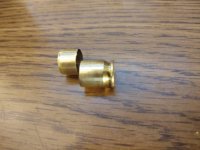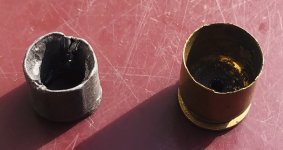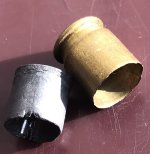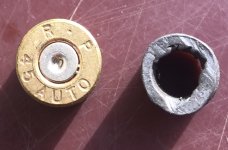I have been reloading and shooting .45's for almost 50 years and this was a first. It was a WCC 74 case and the load was 5.0 of 231 with a 200gr coated swc. There was no excessive noise I remember or violent recoil.
The head part ejected and the forward part stayed in and settled around the bullet of the next round and caused a failure to eject. I looked at the next round and thought the bullet had been shoved down in the case. At the time, I didn't realize part of the separated case was stuck on another case.
The primer looks a bit flat compared to others, but not horribly so. Using a magnifying glass, it appears the split occurred along a cannelure and is very smooth and even.
I am unable to post a picture, but am willing to email pictures to anyone interested.
The head part ejected and the forward part stayed in and settled around the bullet of the next round and caused a failure to eject. I looked at the next round and thought the bullet had been shoved down in the case. At the time, I didn't realize part of the separated case was stuck on another case.
The primer looks a bit flat compared to others, but not horribly so. Using a magnifying glass, it appears the split occurred along a cannelure and is very smooth and even.
I am unable to post a picture, but am willing to email pictures to anyone interested.







